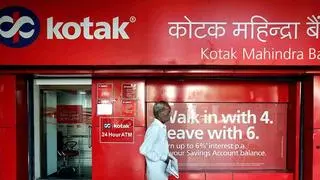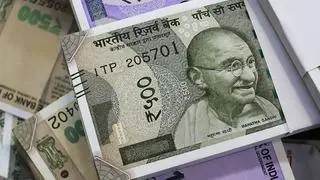For south-based private sector lender Lakshmi Vilas Bank (LVB), raising capital has been a critical issue over the past year, particularly after the RBI rejected the merger plan with Indiabulls Housing Finance. With the much-awaited investment from Clix Group, also hitting a dead-end, the RBI has stepped in to rescue the crisis-hit bank by proposing a scheme of amalgamation with DBS Bank India. Unlike YES Bank, where depositors were rattled over the fate of the bank after the RBI placed restrictions on the withdrawal of deposits, in the case of LVB, the RBI putting forth a concrete resolution plan alongside the moratorium on deposits does offer more comfort to depositors.
That said, the troubles for the old private sector bank, which began long ago, may have been allowed to fester needlessly. The RBI could have stepped in earlier to bail out the bank, mitigating the uncertainty for depositors. Despite the sharp fall in deposits over the past year, the outstanding amount of deposits in LVB stood at ₹20,973 crore as of September quarter. Of this, ₹4,566 crore pertain to savings deposits.
Deteriorating finances
For LVB, troubles began with its fast-paced growth in loans between FY14 and FY18 (19 per cent CAGR), mainly on account of funding chunky corporate assets. From 2.7 per cent in March 2017, gross NPAs as a percentage of loans, had shot up to 17.3 per cent in the June 2019 quarter. Exposure to high risk sectors had impacted the bank’s performance. The RBI had placed the bank under prompt corrective action (PCA) in September last year. Tier 1 capital ratio had slipped to 4.46 per cent as of June 2019, below the RBI’s regulatory norm, necessitating quick capital infusion. But the bank’s attempts to raise capital over the past year failed severely.
In the March 2020 quarter, the bank’s GNPAs shot up to 25.4 per cent and Tier 1 capital was a negative 0.8 per cent, raising serious concerns over the future of the bank. In the September quarter, the Tier I capital slipped to a negative 4.8 per cent. The bank facing governance issues only made matter worse.
Amalgamation with DBS
With LVB failing to raise capital, the RBI has proposed the amalgamation of LVB with DBS Bank India. According to the annual report of DBS Bank, its gross advances stood at ₹19,548 crore as of March 2020; LVB’s gross advances stood at ₹16,673 crore as of March and ₹16,622 crore as of September. DBS Bank’s deposits stood at ₹35,652 crore as of March; LVB’s deposits stood at ₹20,973 crore as of September.
A look at the sector-wise advances suggests that DBS has a higher exposure to industries (67 per cent of non-priority loans) than retail loans (10 per cent).
According to the RBI, DBS Bank has a strong capital base. As on June 30, 2020, its capital to risk weighted assets ratio (CRAR) was comfortable at 15.9 per cent. GNPAs and NNPAs were low at 2.7 per cent and 0.5 per cent, respectively. The combined balance sheet would remain healthy after the proposed amalgamation, with CRAR at 12.5 per cent and CET-1 capital at 9.6 per cent, without taking into account the infusion of additional capital.
Also read:








Comments
Comments have to be in English, and in full sentences. They cannot be abusive or personal. Please abide by our community guidelines for posting your comments.
We have migrated to a new commenting platform. If you are already a registered user of TheHindu Businessline and logged in, you may continue to engage with our articles. If you do not have an account please register and login to post comments. Users can access their older comments by logging into their accounts on Vuukle.